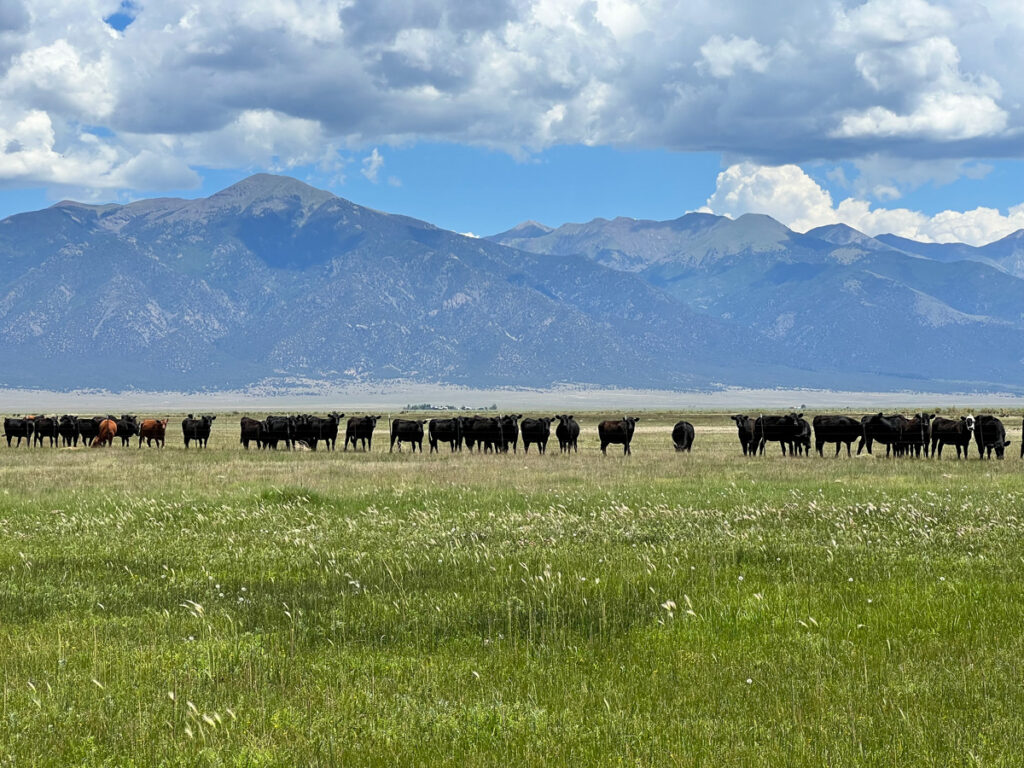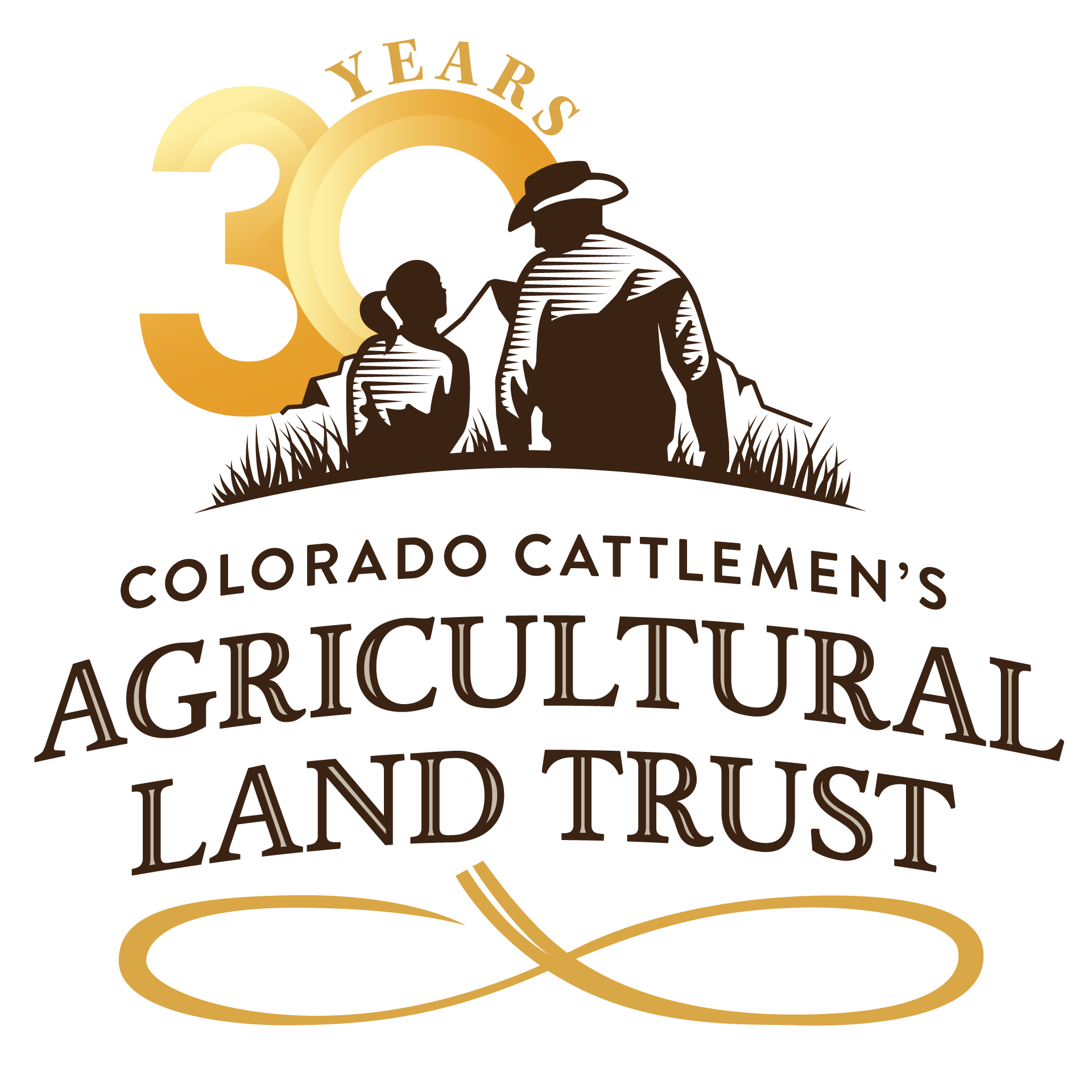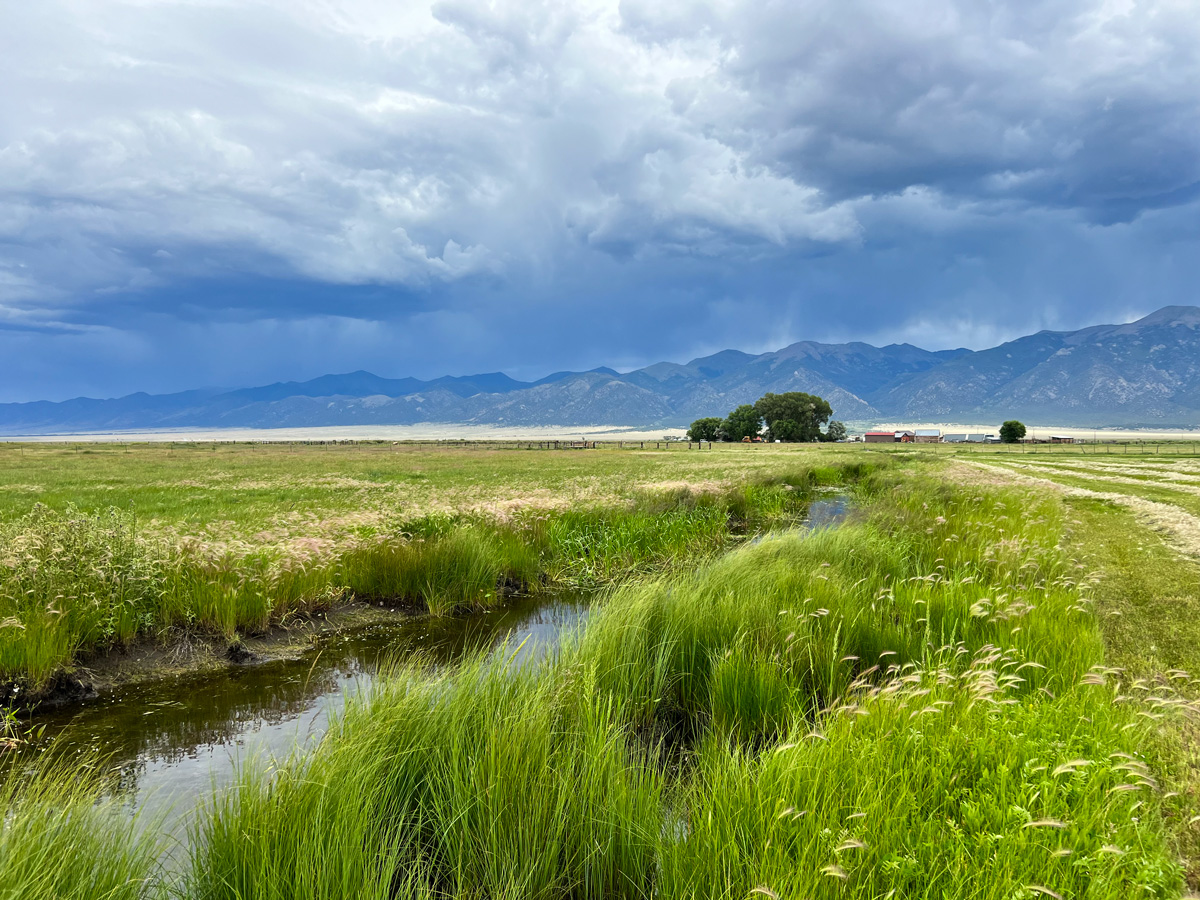Rito Alto and San Luis Ranches Conserved
Significant agricultural land and water rights
permanently conserved in San Luis Valley
Media Inquiries: Maggie Hanna, maggie@ccalt.org, 720.557.8266
April 17, 2023
MOFFAT, Colo. – The Albert and Shellabarger families of Saguache County have ensured that 2,710 acres of their land, including areas considered significant for agriculture and wildlife habitat, will be conserved forever through a new conservation easement partnership with the Colorado Cattlemen’s Agricultural Land Trust (CCALT).
East of Moffat, the Rito Alto and San Luis Ranches are working ranches with agriculturally significant farmland and senior water rights out of the Rito Alto and San Luis Creeks. These surface water rights and the property’s significant groundwater resources, including a dozen artesian wells, are now tied to the land in perpetuity, ensuring the water will continue to support the San Luis Valley’s agricultural economy and natural heritage. The property’s agricultural productivity, rich wildlife values, and proximity to other conserved lands adds to the valley’s legacy of landscape scale conservation. The families’ commitment to conservation builds on over 31,600 acres of agricultural land voluntarily conserved between CCALT and Saguache County families.
The Albert and Shellabarger Families have a long history in eastern Saguache County. A story of resilience and persistence, their ancestors originally homesteaded along Rito Alto Creek upon arrival to the San Luis Valley in 1870. In 1910, the family sold portions of the property to the Oklahoma Land & Colonization Company, who split it into five-acre tracts. The lots were marketed to out-of-state buyers who quickly learned the valley was not an ideal location for the farming they had practiced further east.
As the newcomers abandoned these lands, Abigail Shellabarger, the family’s matriarch, was determined to reconsolidate the families’ holdings along Rito Alto Creek. Prior to and during the Great Depression, she reacquired much of the land that had been subdivided and established the property’s current boundaries. Since the late 1970s and early 1980s, John Albert and Martin Shellabarger have managed the Rito Alto & San Luis Ranches, respectively, for hay production and seasonal grazing. Over the years, through difficult cattle markets and increasing threats to the ranches’ land and water resources, they have carried on this family legacy, stewarding the Rito Alto Creek corridor.
Charles Albert, of Rito Alto and San Luis Valley Ranches, connected the efforts to conserve the property in perpetuity to the family’s rich history. “The opportunity to forever maintain our family heritage and ranching legacy has been a pleasure to accomplish,” Albert said.

The proximity of the Rito Alto and San Luis Ranches to the Baca National Wildlife Refuge, Great Sand Dunes National Park, and Rio Grande National Forest adds to a growing landscape of conserved lands on the east side of the San Luis Valley. The ranches’ mosaic of wet meadows, wetlands, playas, greasewood flats, and the Rito Alto Creek and San Luis Creek corridors offers high-quality habitat for a variety of wildlife species. These corridors of publicly and privately conserved lands continue to sustain diverse wildlife populations and working agricultural operations.
Brendan Boepple, CCALT’s Director of Additive Conservation, commended the families for conserving the property, its unique natural resources, and family heritage. “The conservation of Rito Alto and San Luis Ranches is an enormous achievement for San Luis Valley communities and the families that have called the ranches home for over a century. Their conservation ethic epitomizes the commitment of Saguache County’s ranching families to protect and steward the valley’s land and water resources.”
Grant funds enabled for this conservation easement were provided by the Gates Family Foundation, the Trinchera-Blanca Foundation, and the Colorado Water Conservation Board with the support of the Rio Grande Headwaters Land Trust.
About the Colorado Cattlemen’s Agricultural Land Trust
The Colorado Cattlemen’s Agricultural Land Trust (CCALT) is a nonprofit land conservation organization whose mission is to “…conserve Colorado’s western heritage and working landscapes for the benefit of future generations.” CCALT has worked with private landowners to conserve a total of over 46,000 acres thus far in the San Luis Valley.
About the Gates Family Foundation
The Gates Family Foundation works with partners and communities to build a more equitable, resilient, and sustainable Colorado for all.
About the Trinchera-Blanca Foundation
The Trinchera Blanca Foundation, the Colorado affiliate of The Moore Charitable Foundation, founded by Louis Bacon in 1992, supports organizations committed to protecting land, water, and wildlife habitat in Colorado’s San Luis Valley. The Trinchera Blanca Foundation also supports community programs dedicated to improving quality of life in the region.
About the Colorado Water Conservation Board
The Colorado Water Conservation Board (CWCB) was created nearly 80 years ago to provide policy direction on water issues. The CWCB is Colorado’s most comprehensive water information resource. The agency maintains expertise in a broad range of programs and provides technical assistance to further the utilization of Colorado’s waters. The Colorado Water Conservation Board (CWCB) represents each major water basin, Denver and other state agencies in our joint effort to use water wisely and protect the state’s water for future generations.
About the Rio Grande Headwaters Land Trust
The Rio Grande Headwaters Land Trust (RiGHT) is committed to working with private landowners, public agencies, and other conservation organizations to preserve the natural beauty and wildlife habitat of the San Luis Valley and to promote a sustainable agricultural way of life. RiGHT’s goals are to protect and support working ranches and farms, water resources, wildlife habitat, scenic landscapes, and inspire a culture of conservation in the San Luis Valley.

